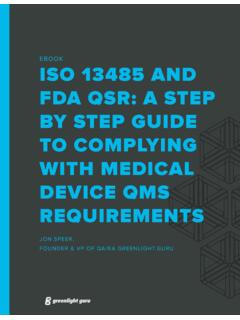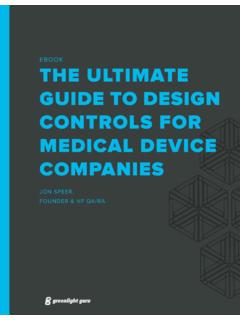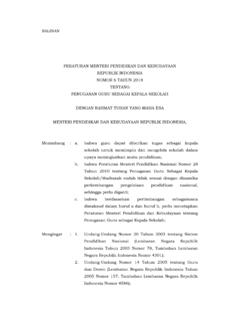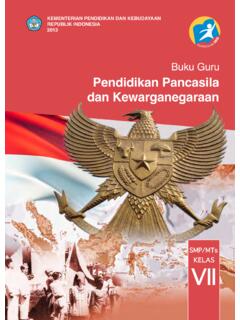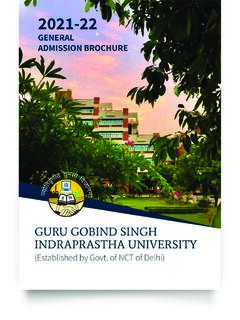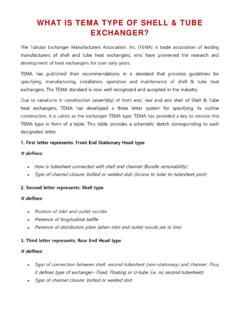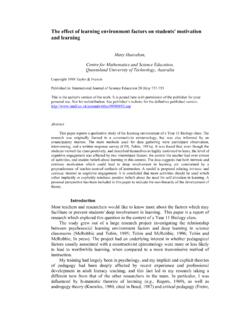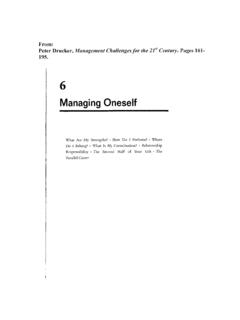Transcription of EBOOK ISO 14971 RISK MANAGEMENT FOR ... - Greenlight …
1 The Definitive Guide to ISO 14971 Risk Managementfor Medical DevicesJon SpeerFounder & VP of of Contents1 What is Risk?2 Introduction8 Design Controls & Risk Management10 Risk MANAGEMENT Process Overview13 Role of MANAGEMENT in Risk MANAGEMENT 14 Risk MANAGEMENT Plan15 Risk MANAGEMENT File16 Risk Assessment = Risk Analysis + Risk Evaluation23 Risk Controls26 Overall Residual Risk Acceptability26 Risk MANAGEMENT Report27 Production & Post-Production Information29 SummaryThe Definitive Guide to ISO 14971 Risk MANAGEMENT for Medical Devices1 What is Risk?Take a moment and think about this:What is RISK?How does RISK impact you every day?The #1 definition in the dictionary defines RISK as possibility of loss or are things that each of us do every day that involves food you eat, the habits you have, your daily routine--all full of risks in some way, shape,or of the riskiest things I do just about every single day is drive my car.
2 But I don t usually think about this being a risk at all. I take it for I get in an accident? Could I get injured or possibly die? Of course. Yet I estimate that the likelihood of these things happening to me are low enough that I willing get behind the wheel without it s because I know that my car has anti-lock brakes, seat belts, and airbags. Maybe it s because I know that the car I drive has been through rigorous safety per ISO 14971 is defined as the combination of the probability of occurrence of harm and the severity of that harm. The intent behind Risk MANAGEMENT is to identify, evaluate, analyze, assess, and mitigate potential product issues. Risk MANAGEMENT is a total product life-cycle Importance of Risk and Medical DevicesI remember the first day on the job as a medical device product development engineer.
3 During the orientation, I was shown a company video that included employees throughout the person shown on the video talked about a common theme: realizing that the medical devices they were part of bringing to market could someday be used on a friend, family member, and possibly started to hit me. The gravity and importance of the job I was about to start. Medical devices that I designed and developed could be used on my mom, sister, kids, and so this from the perspective of a patient going in for any medical procedure. The patient probably thinks very little about the risks of the medical devices about to be , the patient trusts the expertise of the clinicians. The patient seldom wonders if the products used by the clinicians are safe and have been thoroughly and rigorously patient, often unknowingly, accepts the risks of the medical device you and I design, develop, and this is exactly why Risk MANAGEMENT is so important to the medical device have to know that the medical devices you are involved with bringing to patients and end-users are to the Definitive Guide to ISO 14971 Risk MANAGEMENT for Medical Devices My entry into the medical device industry was not a planned career path.
4 Within the first few months of starting as a product development engineer, I knew that I would spend the rest of my life involved with the medical device Definitive Guide to ISO 14971 Risk MANAGEMENT for Medical Devices3 Why?Because I knew then, as I do now, that I have a positive impact on the quality of that I have helped design, develop, and bring to market have have improved the quality of life for thousands and thousands of people. And today, I am fortunate to have an opportunity to work with many others who have the same purpose and you think about it, the ideal of improving the quality of life is the very premise of product risk You Will Gain From This GuideThe topic of Risk MANAGEMENT is one that can be daunting, and at times confusing.
5 Thankfully, ISO 14971 exists and is helpful in providing guidance and 14971 provides a thorough explanation of relevant terms and definitions. And the standard defines a risk MANAGEMENT ve written this guide to align with ISO 14971 and to provide you additional tips and insights for medical device risk me, it is very interesting to observe and listen to feedback and comments about the topic from the perspectives of the experts, the regulators, the consultants, and medical device times, it seems as though each of these perspectives has a very different view of the world regarding medical device Risk MANAGEMENT . At times, it seems as though no one practice of Risk MANAGEMENT in the medical device industry is also intriguing to me. By and large, what I have observed is that Risk MANAGEMENT is too often something we do because we have to--a checkbox seems that we seldom use Risk MANAGEMENT as a tool to help us design, develop, and manufacture safer medical we purpose of this guide is three-fold:1.
6 To leave you with an understanding of what is expected from medical device regulators regarding Risk To help you use Risk MANAGEMENT as a tool to design safer medical devices by providing a few helpful tips and pointers to guide To share with you all the steps that you need to define and address within your Risk MANAGEMENT note that the focus of this guide is strictly medical device product risk will not explore other risk MANAGEMENT topics such as business or & StandardsRealize that nearly every medical device regulatory agency has placed the topic of Risk MANAGEMENT front and fact, regulatory agencies, including FDA, are now using risk-based processes throughout their own internal processes when reviewing device submissions and conducting inspections and this: FDA, Health Canada, EU Competent Authority, Australia TGA, and Japan MHLW all require you to have a Risk MANAGEMENT process defined and Risk MANAGEMENT documentation for your all these regulatory agencies endorse ISO 14971 Medical devices -- Application of Risk MANAGEMENT to Medical addition to ISO 14971 , there are several other key medical device industry standards requiring risk MANAGEMENT .
7 The partial list includes:IEC 60601 IEC 62366 ISO 10993 ISO 13485 The Definitive Guide to ISO 14971 Risk MANAGEMENT for Medical Devices5 Yes, all these standards make reference to risk MANAGEMENT (and ISO 14971 ).Did you notice ISO 13485 is on that list?This is significant because the ISO 13485 standard is specific to quality MANAGEMENT expectation is that you manage risk throughout the entire product lifecycle and throughout your entire QMS. (And with the pending revision to ISO 13485 anticipated in 2016, the tie to Risk MANAGEMENT will only become more significant.)ISO 14971 - The Current StateI could share with you a history lesson on the genesis and evolution of medical device risk there may be some merit in going through this history, I suspect you are probably more interested in the present state of Risk MANAGEMENT , as well as where things are current state of the art regarding risk MANAGEMENT is described in the standard ISO 14971 Medical devices -- Application of Risk MANAGEMENT to Medical Brief Overview of the Standard & AnnexesToday, there are two versions of ISO 14971 --both likely to impact you in some way:ISO 14971 :2007 and EN ISO 14971 :2012 The EN version is applicable if you are selling medical devices in Europe.
8 I explain why there are two versions of ISO 14971 , that throughout this guide, when I reference ISO 14971 , this applies to either version. When the information provided applies to only one of the versions, this shall be stated as both cases, the abstract describing the standard is the same: ISO 14971 is a key standard specifying a process for a manufacturer to identify the hazards associated with medical devices, including in vitro diagnostic (IVD) medical devices, to estimate and evaluate the associated risks, to control these risks, and to monitor the effectiveness of the controls. The requirements of this standard are applicable to all stages of the life-cycle of a medical device. ISO 14971 is a very good standard. While not prescriptive per se, the standard does a very good job of explaining the requirements, expectations, and stages of a risk MANAGEMENT , the standard provides several informative annexes which provide more in-depth explanations and this guide provides an overview, walk-through, and practical application of ISO 14971 , I highly recommend that you do make ~$200 decision to actually purchase the standard (no, I don t get a commission).
9 It is worth you are pursuing the European market, you do not need to purchase both ISO 14971 :2007 and EN ISO 14971 :2012--just purchase the EN medical device regulatory world has adopted this standard. And I see no reason to abandon this should also be aware of ISO/TR 24971:2013 Medical devices -- Guidance on the application of ISO 14971 . 24971 (no, it s not a typo) is a guidance document specifically for ISO 14971 . If you are seeking additional insights and guidance on application of ISO 14971 , the ISO/TR 24971:2013 guidance is Why Are There Two Different Versions?EN ISO 14971 :2012 applies only to manufacturers placing devices on the market in the rest of the of the world, ISO 14971 :2007 remains the applicable 2012 version came to be to harmonize with three EU Medical Device Directives (MDDs): The Definitive Guide to ISO 14971 Risk MANAGEMENT for Medical Devices790/385/EEC, 93/42/EEC, and 98/79/EC.
10 The normative, or core text, of both standards is the big difference is that EN ISO 14971 :2012 introduced three new annexes ZA, ZB, and ZC. These are commonly referred to as the (now infamous) Z the 2012 version, the annexes of ISO 14971 were considered as informative. The Z annexes, though, were developed specifically to align with the EU medical device intent behind the Z annexes is that these are no longer just informative, but actually required for EU. (Note, there is quite a bit of an ongoing debate on the topic of the Z annexes.)Some of the highlights of the Z annexes include:Reduce risks as far as possible (versus as low as reasonably practicable ) for all risksEstablish risk control measures for all risks (not just the unacceptable ones)Need for a risk / benefit analysis for all risksRisk reduction has to be more than information provided to the user ( labeling and instructions for use)You should understand the impact of EN ISO 14971 :2012 and your know that your risk MANAGEMENT process can align with both versions of ISO your Risk MANAGEMENT process with EN ISO 14971 :2012 will mean that you also align with ISO 14971 :2007.


